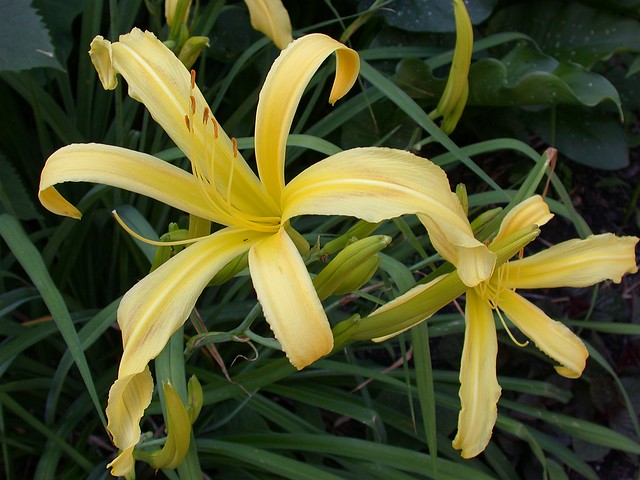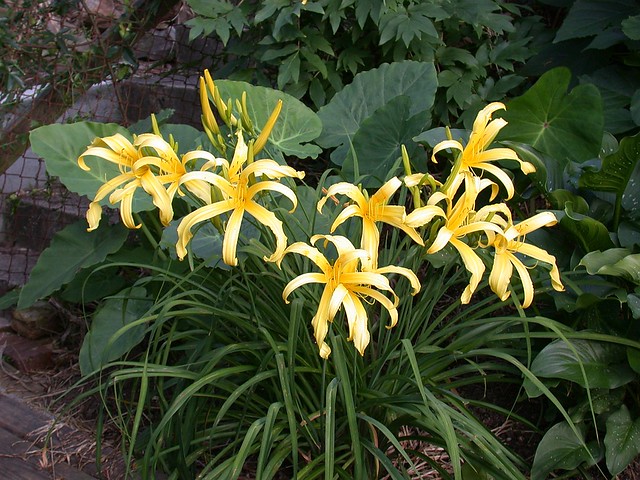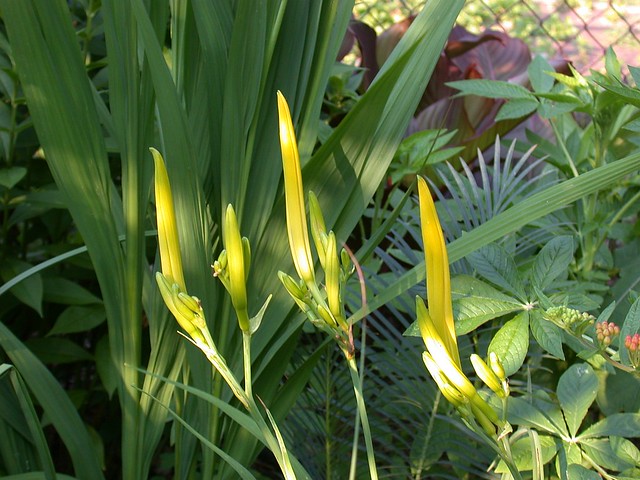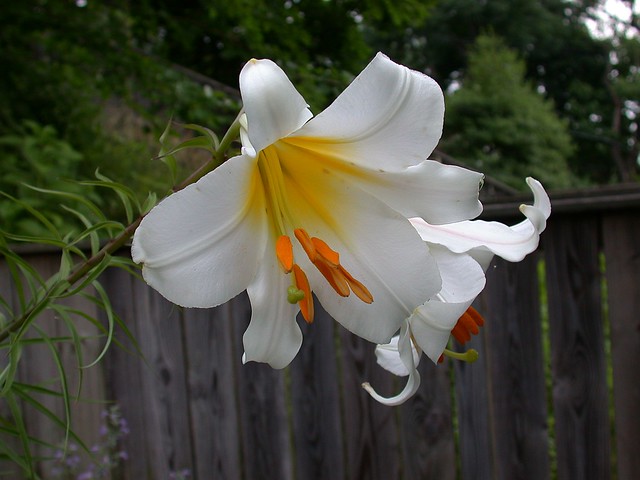
Hemerocallis 'Kindly Light'
When I first saw daylily 'Kindly Light' in a botanical garden several years ago, I was immediately smitten. The long, narrow tepals gave it an exotic and almost tropical look that was unlike any other daylily I had seen. In 2005 I found it at a local garden center and brought one home.
Many daylilies have come and gone in my garden over the years, but this is one that I've held onto. Besides the unusual flowers, its foliage tends to hold up better than many of the other cultivars I've tried. The pale yellow flowers show up well in front of dark foliage, and display well at dusk, although they've proven a bit tricky to photograph; under ordinary lighting conditions they tend to overexpose (as in the photo below). The true color is almost chartreuse, but often appears darker with an orangish tinge if underexposed.

One of the main drawbacks of daylilies in general is that they require daily deadheading to remove the previous day's spent blossoms. As with all daylilies in my hot-summer climate, the blooming period is tragically short. 'Kindly Light' usually blooms for me for about 3 weeks from mid-June to early July; this year it's blooming a bit later due to our unusually cold winter and late, chilly spring. But it's an easy plant to grow, requiring quite ordinary garden soil and tolerating slightly less than full sun. While daylilies are fairly drought-tolerant, they will bloom better and the foliage will last longer if not allowed to dry out. It will still look tired by late summer, and can be trimmed back or camouflaged with other plants.

Flower buds
Hemerocallis 'Kindly Light' is one of the older "spider" type daylily cultivars, introduced by daylily breeder LeMoine Bechtold in 1949. The parentage is unknown and there may be clonal variation within the cultivar, as several sources state that similar seedlings from the cross were given this name. 'Kindly Light' is an ancestor of many of the modern "spider" cultivars but has remained popular over the years. In 1989 it was the recipient of the American Hemerocallis Society's Harris Olson Spider Award.

Despite their name, daylilies (Hemerocallis) are not true lilies (Lilium, family Liliaceae). Daylilies get their common name from their lily-like flowers, which (unlike those of true lilies) close at night and last a single day. Once classified in Liliaceae, recent research has shown that Hemerocallis is more closely related to Xanthorrhoea and modern classifications now place Hemerocallis with that genus (along with several other former Liliaceae) in the family Xanthorrhoeaceae.

Lilium regale, a true lily

No comments :
Post a Comment